- Trending:
- Pope Leo Xiv
- |
- Israel
- |
- Trump
- |
- Social Justice
- |
- Peace
- |
- Love
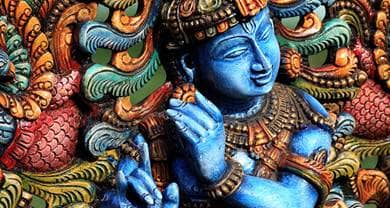
RELIGION LIBRARY
Hinduism
Influences
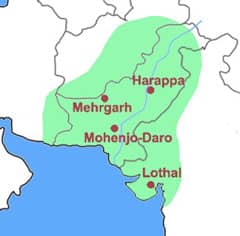 The earliest manifestation of what we now call Hinduism seems to be the product of the melding of two religious and cultural influences: the Indus Valley Civilization that was located in what is today northwest India and eastern Pakistan and that dates to between 2500 and 1500 B.C.E.; and the Aryan culture and religion that arose between 1500 and 500 B.C.E. Although there has been considerable scholarly (and political) debate about the relative influence of these two cultures, it seems clear enough that Hinduism emerged out of a complex combination of elements of each of these religious cultures.
The earliest manifestation of what we now call Hinduism seems to be the product of the melding of two religious and cultural influences: the Indus Valley Civilization that was located in what is today northwest India and eastern Pakistan and that dates to between 2500 and 1500 B.C.E.; and the Aryan culture and religion that arose between 1500 and 500 B.C.E. Although there has been considerable scholarly (and political) debate about the relative influence of these two cultures, it seems clear enough that Hinduism emerged out of a complex combination of elements of each of these religious cultures.
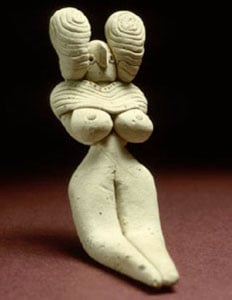 Relatively little is in fact known about the details of the religious world of the Indus Valley civilization. Based on archaeological remains, however, it seems that this was a religious world that was particularly focused on ritual bathing and animal sacrifice, elements that may be the source of later Hinduism's attention to the purifying qualities of water and the centrality of sacrifice. Furthermore, a great many female figurines have been discovered in the ruins of the cities that date to this period. These seem to have been goddesses, and may have been particularly associated with fertility rituals.
Relatively little is in fact known about the details of the religious world of the Indus Valley civilization. Based on archaeological remains, however, it seems that this was a religious world that was particularly focused on ritual bathing and animal sacrifice, elements that may be the source of later Hinduism's attention to the purifying qualities of water and the centrality of sacrifice. Furthermore, a great many female figurines have been discovered in the ruins of the cities that date to this period. These seem to have been goddesses, and may have been particularly associated with fertility rituals. 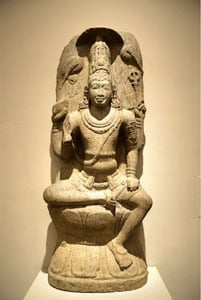 Scholars have speculated that these figures are origins of the many goddesses who populate the vast Hindu pantheon. Male figures have also been found on stone seals. Some of these seals depict a seated figure surrounded by a variety of animals, including bulls. These images lead some scholars to label these "proto-Shiva" figures, since the great god Shiva is generally associated with animals (he is sometimes called "Pashupati," the Lord of the animals) and more particularly linked with the bull, which later becomes his special "vehicle."
Scholars have speculated that these figures are origins of the many goddesses who populate the vast Hindu pantheon. Male figures have also been found on stone seals. Some of these seals depict a seated figure surrounded by a variety of animals, including bulls. These images lead some scholars to label these "proto-Shiva" figures, since the great god Shiva is generally associated with animals (he is sometimes called "Pashupati," the Lord of the animals) and more particularly linked with the bull, which later becomes his special "vehicle."
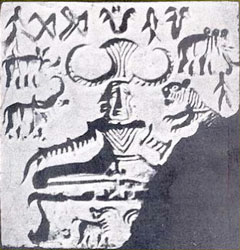 In recent years, there has been a tremendous amount of debate about the influence of the Aryans. Part of the debate has been about who these people really were. Over one hundred years ago European scholars speculated that the Aryans were invaders who came from northeastern Europe, and were a warlike, highly mobile people engaged in herding and breeding animals who brought with them a new, "foreign" religion that supplanted the indigenous Indus Valley Civilization. Many scholars, both in India and in the West, have seen in this explanation—the "
In recent years, there has been a tremendous amount of debate about the influence of the Aryans. Part of the debate has been about who these people really were. Over one hundred years ago European scholars speculated that the Aryans were invaders who came from northeastern Europe, and were a warlike, highly mobile people engaged in herding and breeding animals who brought with them a new, "foreign" religion that supplanted the indigenous Indus Valley Civilization. Many scholars, both in India and in the West, have seen in this explanation—the " Aryan Invasion Thesis"—a western, colonialist agenda at work, one that wants to see all that is good in India as having its ultimate source in Europe. These scholars have argued that the Aryans were not in fact outsiders, and that they did not invade and supplant the Indus Valley Civilization, but instead blended with it. The generally held scholarly position is somewhere in the middle: that there was a migration of Aryan people and a diffusion of Aryan culture into South Asia, but not a single invasion (if there was an "invasion" at all).
Aryan Invasion Thesis"—a western, colonialist agenda at work, one that wants to see all that is good in India as having its ultimate source in Europe. These scholars have argued that the Aryans were not in fact outsiders, and that they did not invade and supplant the Indus Valley Civilization, but instead blended with it. The generally held scholarly position is somewhere in the middle: that there was a migration of Aryan people and a diffusion of Aryan culture into South Asia, but not a single invasion (if there was an "invasion" at all).
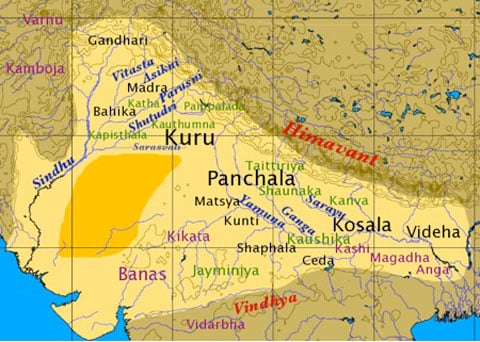
| VEDIC TEXTS |
|
Regardless of who the Aryans were or where they came from, it is clear that their religious world focused on ritual sacrifice, particularly sacrifice involving fire. They also worshipped a variety of gods, many of them linked to natural forces. These religious rituals and myths were eventually formulated as the Vedas, a genre of orally-transmitted texts that would come to form the foundation of Hinduism.
In the 6th (or 5th) century B.C.E., two important veins of religion emerged in India that had a tremendous influence on the formation of Hinduism: Jainism and Buddhism. Although these did not necessarily begin as "new" religions, they formulated new ideas that significantly challenged the religious status quo. In particular, both Buddhism and Jainism challenged the religious efficacy of sacrifice, rejecting it as too materialistic. They instead advocated detachment from the physical world—renunciation—as the ultimate religious path. Classical Hinduism absorbs the ideals of renunciation and asceticism, not supplanting but supplementing the Vedic practices and ideals of sacrifice.
| INFLUENCES ON HINDUISM | |||
| Jainism: | Buddhism: | Islam: | Christianity: |
| *challenges sacrifice | *challenges sacrifice | *wandering | *missionary practices |
| *advocates renunciation | *advocates renunciation | Sufi ascetics | |
Hinduism has also been influenced by two distinctly foreign religions: Islam, which arrived in India sometime around the 8th century C.E. and dominated substantial parts of India with the rise of the Mughal Empire in the 16th century; and Christianity, which arrived in India with the Portuguese in the 15th century—although there had been small Christian communities in South India even before the Portuguese—and held considerable sway with the rise of the British Raj in the 18th century.
One way in which Islam was particularly influential as Hinduism developed was through the Sufi orders of wandering ascetics, particularly their devotional singing and poetry. Hindus adopted many of their images and methods, and the Hindu veneration of saints—humans who, through their piety and purity ascend to a semi-divine state—was particularly influenced by the Sufis.
Christian missionary practices in India, and the fundamentally Christian orientation of the British Raj, had and continue to have a profound and complex influence on Hinduism. In the late 19th century, many Hindu intellectuals, responding to attacks on the so-called idolatry of Hinduism, emphasized the rational, intellectual, meditative schools of Vedanta, leading some Hindu intellectuals to denounce popular devotion as not genuine Hinduism.
One of the most remarkable aspects of Hinduism has been its ability to absorb and adopt an array of cultural and religious influences, in the process transforming seemingly non-Hindu ideas and practices into distinctly Hindu ones.
Study Questions:
1. What cultures are believed to have merged to create Hinduism?
2. What is significant about the archaeological findings of figurines?
3. Why is the role of the Aryans contested?
4. How has Hinduism been shaped by other religions?










